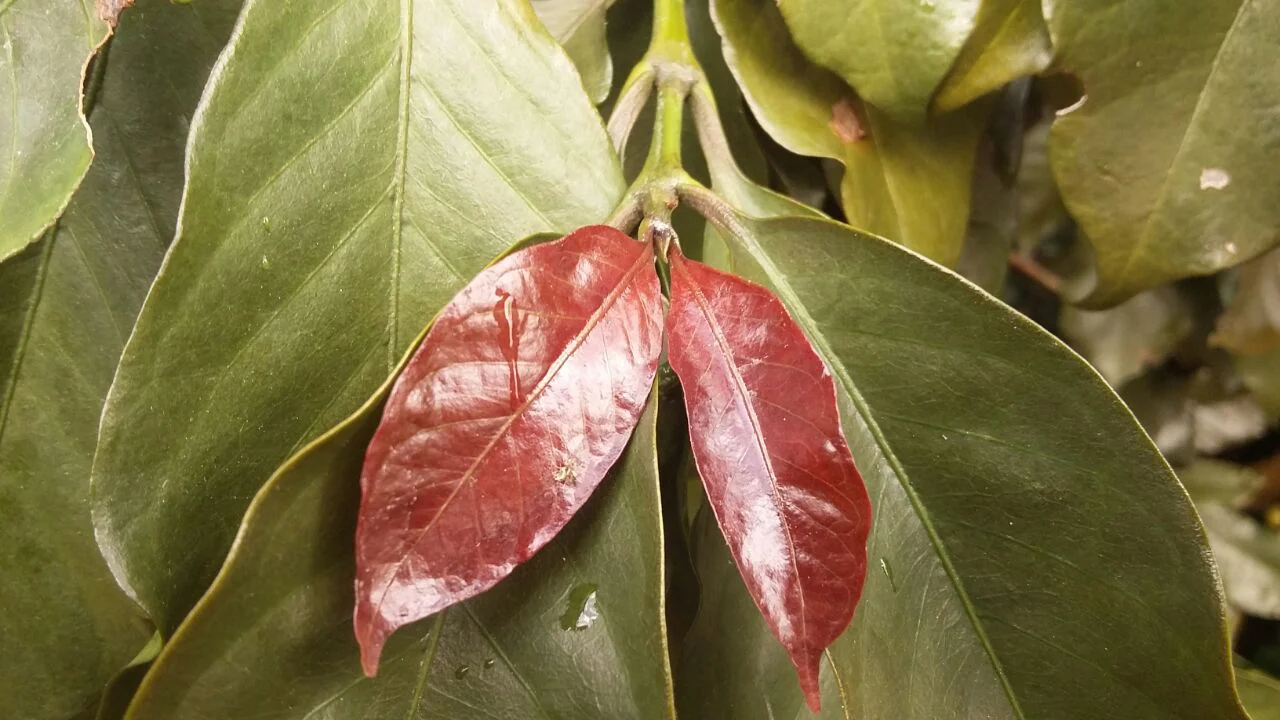Coffee Blossoms Painted in Red Ink: The Story of a Rare Arabica Variety
- Jonas Leme Ferraresso

- Sep 30
- 3 min read
Jonas Leme Ferraresso — agronomist and advisor to sustainable farms in Brazil — explores the rare Arabica mutation Coffea arabica var. purpurascens: a plant whose blossoms and leaves seem painted in red ink.
In the vast universe of coffee, every variety carries a story that connects botany, genetics, and culture. Among these stories, few are as intriguing as that of Coffea arabica var. purpurascens. Unlike widely known and cultivated varieties such as Bourbon or Typica, purpurascens is marked by a unique aesthetic and genetic feature: the presence of purplish-reddish pigmentation on leaves, young branches, and even flowers.

This variation sparks curiosity not only among producers and researchers but also among coffee enthusiasts eager to understand the diversity within a single species. But what exactly explains this phenomenon?
A Somatic Mutation in Coffee’s History
Purpurascens is the result of a somatic mutation—a spontaneous genetic change that occurs in a cell or tissue of an already established plant. Unlike inherited mutations, passed on through seeds, somatic mutations appear locally and often must be preserved through vegetative propagation methods, such as grafting or cuttings.
In this case, the mutation affects the production of pigments, especially anthocyanins, the pigments responsible for purplish and reddish hues. The outcome is a coffee tree with an almost ornamental appearance that stands out vividly in the field.
It is worth noting that Coffea arabica is a self-pollinating species, which grants it strong genetic stability. Yet, rare somatic mutations still emerge and occasionally become fixed. Purpurascens is a classic example of such genetic plasticity.
Aesthetic Value Over Productivity
Although undeniably beautiful, purpurascens has never gained commercial significance. Its value lies more in its aesthetic and scientific uniqueness than in productivity or cup quality. Farmers who cultivate such plants often do so out of genetic curiosity or to enrich germplasm collections.
Still, this variation prompts reflection. Mutations like purpurascens reinforce the importance of preserving genetic banks and living coffee collections. Traits once deemed secondary may, at some point, provide valuable insights for research related to environmental stress resistance, secondary metabolism, or even yet-unknown agronomic features.
The Symbolism of Diversity in Coffee
Purpurascens reminds us that coffee is more than what ends up in the cup. It is a living organism, subject to transformations, surprises beyond human control.. This genetic diversity is one of the species’ greatest treasures, and learning about such cases helps us better understand both the past and the future of coffee cultivation.
Even if this mutation has not translated into direct economic value, it has enriched coffee’s cultural imagination. Photographs of purpurascens in bloom are striking, with the contrast between pure white flowers and deep red foliage revealing a little-known side of such a familiar plant.











Comments